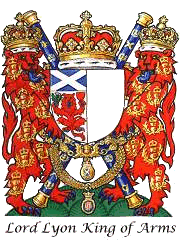Researched and compiled by
Hugh D.P. McArthur, FSA Scot
Clan Arthur Seannachie
High Commissioner for Clan Arthur in Britain
© 2020 Hugh DP McArthur
History is in the landscape all around – It is the story of how a people interact with their environment throughout the course of time, leaving their remnants to tell the tale of lives gone by. This island is ancient, an island on the edge of the Atlantic, an island on the edge of the world. Some of the oldest rocks on planet earth are found in the Scottish Highlands and the people have been here a long, long time. Millennia have passed since man first left his mark on this sacred soil and his descendants are probably still here!
In this part of the world the landscape is complex. Formed from mountains, scored with glens, strewn with lochs and torn to ribbons by fjords and rivers, water plays a paramount role in the Scottish Highland environment, and water played a pivotal role in how our Celtic ancestors interacted with their world. From the earliest times drinking wells and springs have been sacred and deep waters have held the utmost respect. Currents became monsters; whirlpools turned dragons and the seafaring Gael bent to the Cailleach’s winter storms.
During the Arthurian period Dalriada (or Argyll) had an active naval recruitment policy, whereby each twenty houses were duty bound to provide 2, 7 bench vessels complete with crew for seagoing missions. Under this policy it is recorded in the Senchus Fer nAlban that the three tribes of Dalriada (Loairn, n’Oengusa & n’Gabrain) combined could raise about 2,000 highly skilled sea going warriors – A substantial force in any army.
These Highland mariners were completely trained in the art of survival in their complex landscape in all seasons. Their knowledge of the seas' tides and currents, the winds and the stars was extensive. On land their horsemanship was legendary. An old Argyll legend tells that their ancestors, a tribe the Romans called the Epidii (The Men of the Horse) wiped out a Roman legion at the Battle of Mons Graupius in 83AD and took their eagle home with them, which was then ceremoniously thrown into Loch Awe in the heart of Argyll.
These were people who hunted, farmed and fought on horse and foot across a savage landscape for centuries. Men and women who travelled in skin boats on inland waterways like Loch Awe, Loch Lomond and Loch Tay, crossed the fjords of Loch Linnhe, Loch Fyne and Loch Long and sailed to the enchanted islands in the western sunset. These were the tribes whom Rome could never tame. These were just some of the brothers (and sisters) in arms with Artur & Aeden who defended Britain against the Saxons and the Picts.
They raided as far north as Orkney; they sailed frequently to the Hebridean Isles and Ireland. They reached further south to Man; Wales and Cornwall trading further on still into the Bay of Biscay to the Celtic lands of Gaul and Galicia before finally reaching the Mediterranean on the West trade winds as sailors have for about 4,000 years. This was Artur’s Domain, a myriad of related tribes with an intertwined history stretching back through millennia all living, thriving, squabbling, trading and raiding around the Western seaboard of Britain – The Celtic Fringe on The Island of the Mighty.
The heart of this mighty island is in the west – If you include Ireland and the Northern Isles then the centre of Britain is somewhere around the Isle of Arran in the Clyde Estuary. Emptying into that other great lake in the west, the Irish Sea, the Clyde Estuary is an extensive network of fjords, islands and peninsulas without compare that forms the gateway to the Lake at the heart of Arthurian Legend. Loch Lomond is Britain’s largest inland waterway that lies enclosed by mountains protected by Dumbarton – The Fortress of the Britons – The Rock on the Clyde.
• • • • •
An old Gael and an old Jew were discussing their ancestry – each proclaiming to go way back to the dawn of man and they were trying to find a common relative.
Eventually after much discussion, the Jew said “Well what about a Noah – you must have had a Noah in the family?”
“No I don’t think there has ever been a Noah in the Clan” said the Gael.
“There must have been!” exclaimed the Jew “Noah saved the world! Way back when the whole world was flooded, Noah built an ark and saved his family and all the animals and everyone else was drowned! He’s the ancestor of everyone!”
“No” said the Gael “I don’t think there’s ever been a Noah in the clan . . . but when have you ever heard of a Gael not having his own boat?”

RECLAIMING HERITAGE
RECONNECTING COASTAL COMMUNITIES
www.galgael.org

